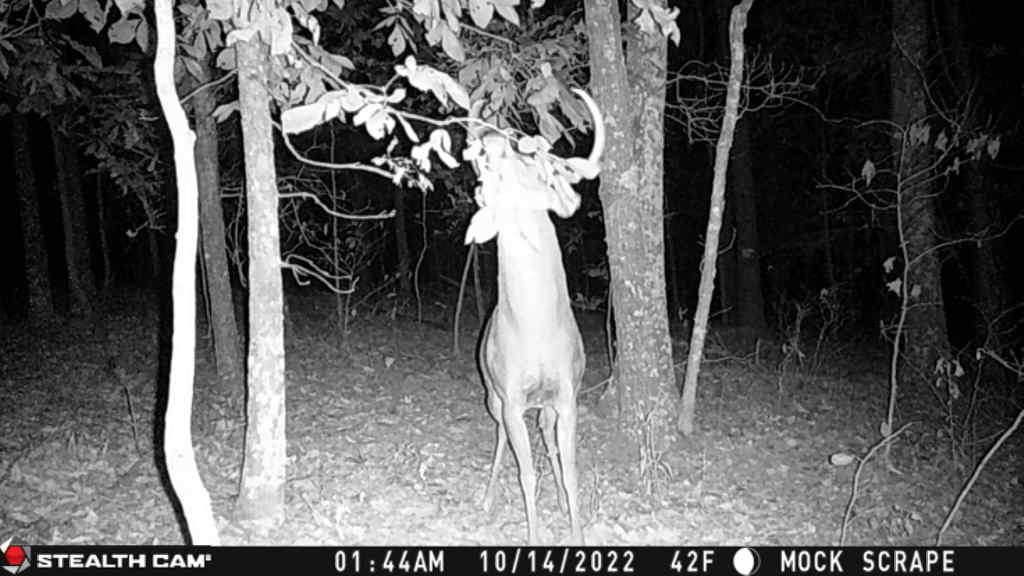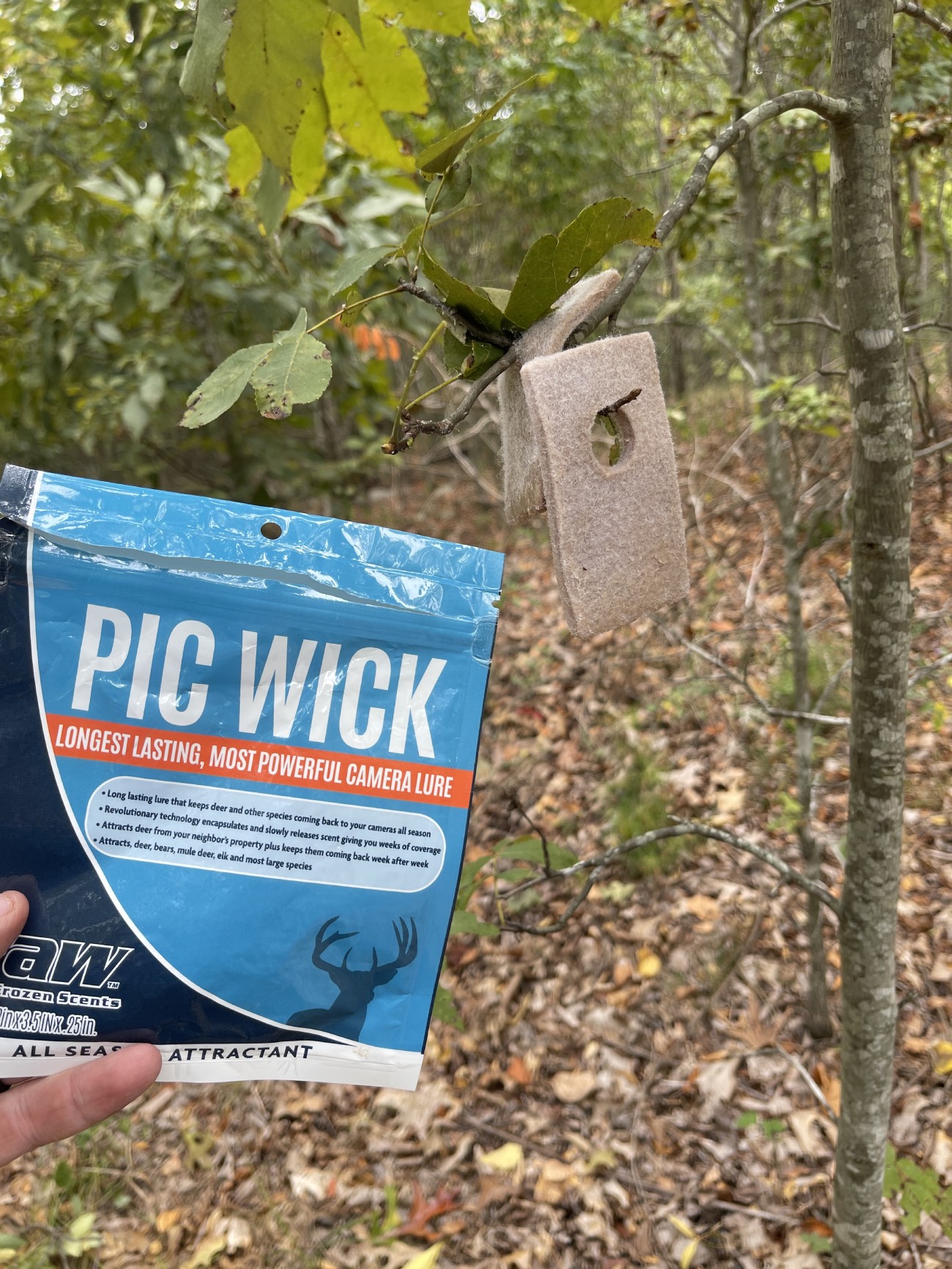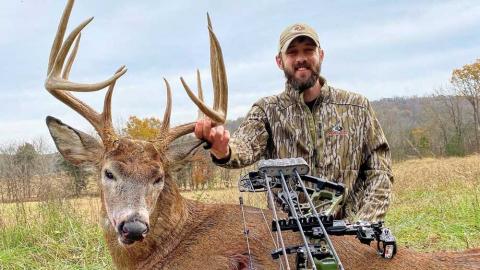
Heath Wood
My summer scouting efforts have revolved around supplemental feeding sites for several years. Due to CWD concerns, feeding has recently become prohibited in certain areas in my home state of Missouri. In legal areas, all feeds or baiting must be cleaned or removed at least ten days before hunting season begins on September 15th. The Missouri Department of Conservation regulations state that an area is baited for ten days after the complete bait removal. I agree with the MDC regulations of deviating from hunting over baited areas. Yet, the challenge I have faced presents itself during the twenty-five days before the season when trying to get deer to a specific area for my game camera to capture their movement. Specifically, I am trying to figure out how to attract bucks to my camera locations in late September or early October without using food. What about making a mock scrape in September?
The key to success in making mock scrapes has always been timing. Many hunters begin making mock scrapes during mid-October or the pre-rut when bucks and does are making scrapes to communicate with each other before the breeding season. A pre-rut scrape is for bucks to receive the first notification that a doe is getting near her estrus cycle and is also a way for bucks to communicate and size one another up for competition when the rut begins. To be successful at hunting over pre-rut scrapes, the hunter must time the three or four-day window, when bucks are most active during daylight hours. If it’s too early into the season, the bucks still use scrapes at night. If it’s too late into the season, the bucks will have begun pursuing does, and scrapes are used much less until after the rut when scrapes often get re-activated.
A September mock scrape is less timely than a pre-rut scrape in late October. However, they can be as effective, if not more, when used as a scouting tool and as a setup for the remainder of the fall hunting season. When trying to find a way to attract bucks to my cameras in late September without using food, I discovered the effectiveness of using early-season mock scrapes. An early scrape is used for two reasons. The first reason is the same as what food has done throughout the summer: to take inventory of what bucks are in the hunting area. The second is to build the curiosity and territorial instincts of bucks, which can make them use a scrape through September while still in bachelor groups. After they split during early to mid-October, I have often witnessed mature bucks re-visit the same scrape to see what competition still lingers in the area. Early season scrapes are not as time-sensitive, yet location is crucial.
Locations for Early Season Mock Scrapes
When creating an early-season mock scrape in September, one must ensure that the scrape is in an area that can be hunted in October. For example, don’t make a mock scrape at the edge of an open field to get clear photos from game cameras. There is no cover to set a stand when ready to hunt. Instead, make scrapes in an area where bucks have routinely visited in past years.
When I was younger, my family's farm had an area that, year after year, had a scrape line that consisted of five to six scrapes every mid-October. One year, I placed a hang-on stand near the scrapes in late August to get a head start. In mid-September, I returned to the area and made a mock scrape on the same old logging road, where the scrapes were often made. After making the scrape, I placed a game camera overlooking the scrape. Photos showed that several bucks would visit the scrape in September, then later in the fall, bucks would return to that area and scrape again or check the same scrape made in September. This area quickly became one of my favorite hunting setups during the October pre-rut.
Read More: Pairing Mock Scrapes with Game Cameras
Scent Selection & How To Create A Mock Scrape

An early-season mock scrape is entirely different from a scrape in October. For that reason, the scent type used is also a bit different. The hunter is often better off using a primary doe urine or some curiosity scent for September or early October scrapes. However, when conducting an early mock scrape, I often use a scrape blend that can also be used during the pre-rut. Some of my favorites in recent years have been Raw Frozen Scents Scrape Lure and their Pick Wick Camera Lure. The Scrape Lure combines buck and doe scents and works excellent for deer visiting a scrape often. The Pick Wick is a proprietary blend of unique natural scents that mimics wildlife’s basic needs: food, shelter, and social life. When using this combo, I scrape the ground with a stick until it is a dirt circle about 18” to 24” in diameter. Above the scrape, I hang the Pick Wick from an overhanging branch. Deer will use the scent on the ground and the overhanging branch to leave their scent behind.
Another great mock scrape kit is the Wildlife Research Center’s new Active Branch kit. This kit has an attachable bracket to create an overhanging branch wherever needed. This kit allows placing a mock scrape in the perfect location of where a stand will be later in the fall when hunting or wherever a better camera angle is needed for a game camera. The Active Branch comes with WRC’s Golden Scrape, a blend of estrus scent and intruding buck scents with subtle tones of fresh scraped earth and territorial musk. A blend of scents works better in September and early October than using pure estrus or a doe-in-heat scent.
As mentioned earlier, the timing of when a buck will use the mock scrape is not as critical as when using an early-season mock scrape. However, the only timing key issue comes when refreshing or creating the scrape. In the early season, deer are still in summer patterns. The best time to create mock scrapes is midday when most deer are bedded in a cool area, thus preventing spooking any deer out of the area and allowing natural movements to be monitored on game cameras.



























